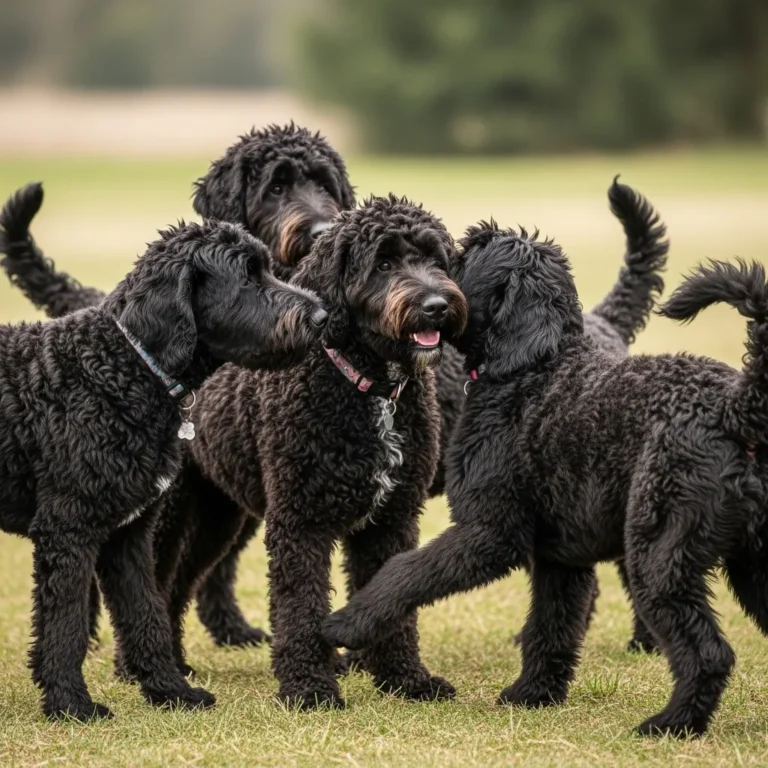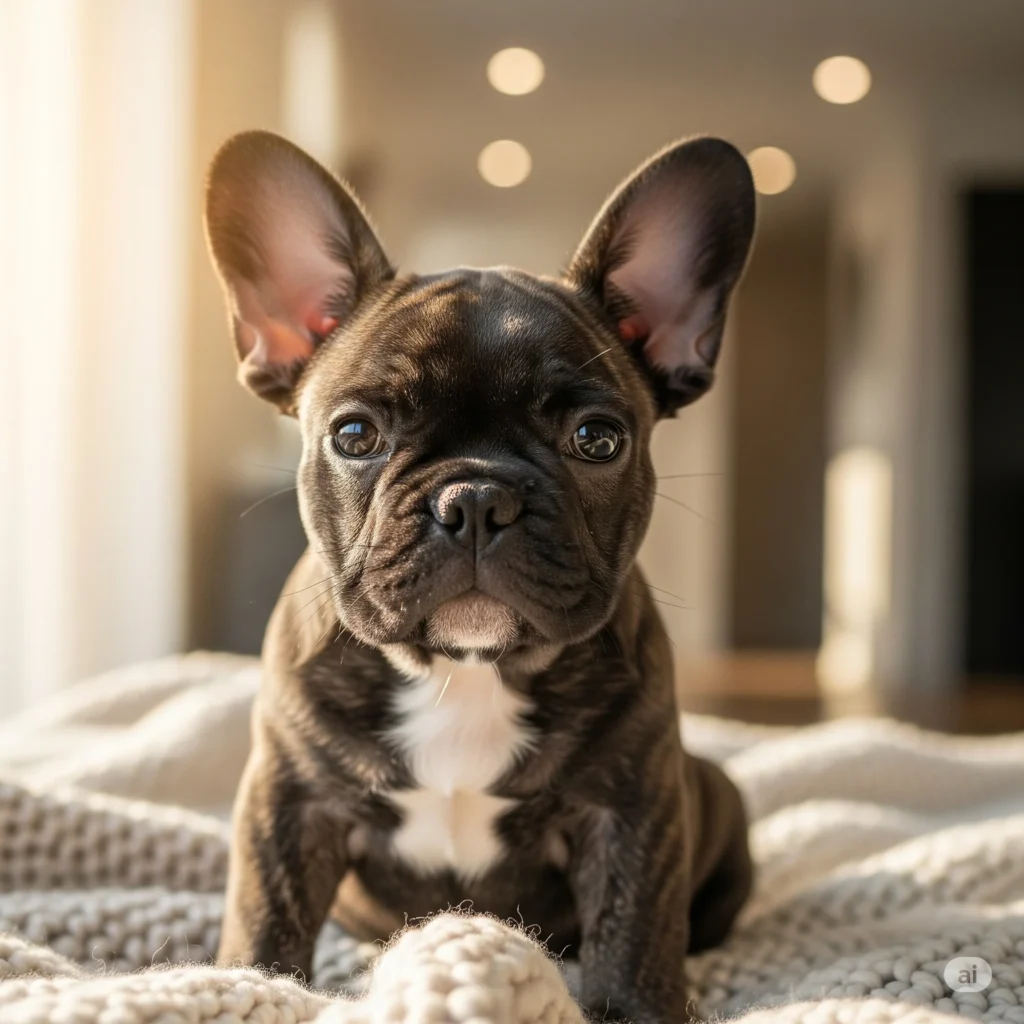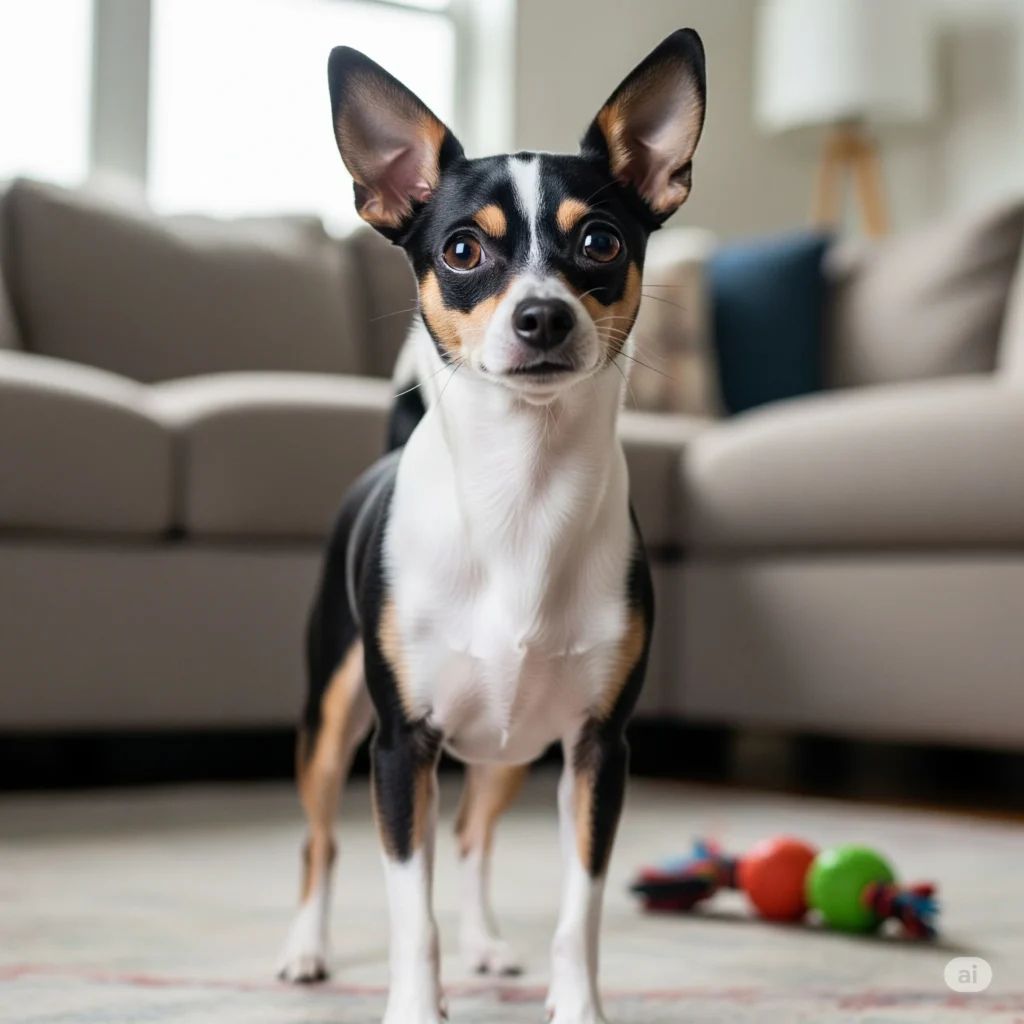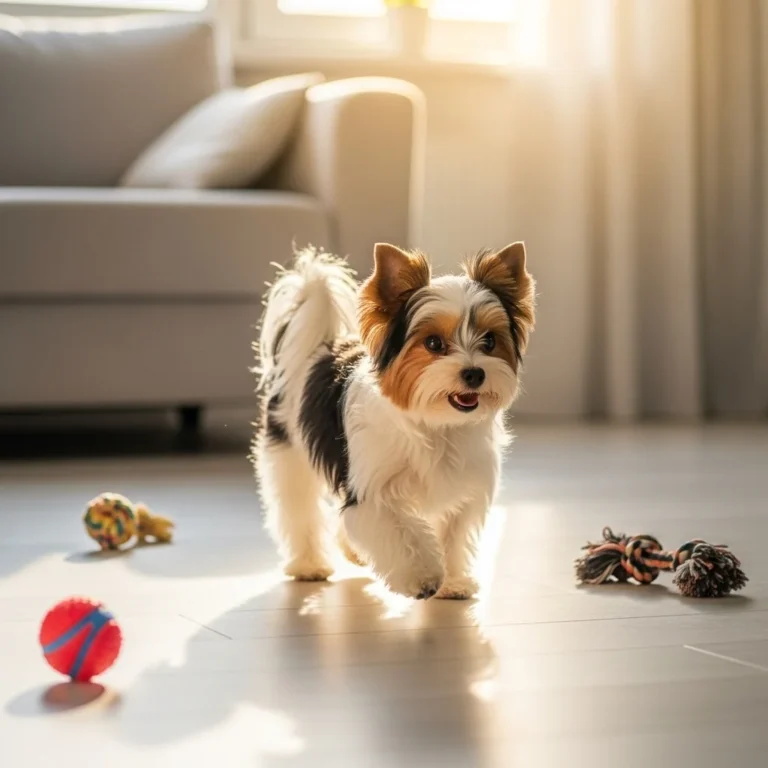
black labradoodle
Hey there, fellow dog lover! Have you ever been out on a walk, seen a gorgeous, fluffy black dog trotting by, and just had to stop and stare? I know I have! There’s just something about that sleek, midnight-hued coat and those sparkly, soulful eyes that can completely capture your heart. And when you find out that stunning creature is a Labradoodle? Well, let’s just say the magic is real!
If you’ve ever found yourself captivated by one of these beautiful, curly-coated charmers, you’ve just had a brush with a Black Labradoodle. And let me tell you from experience—they are so much more than a pretty face. I’m constantly amazed by how these pups blend brains, a heart full of affection, and that undeniable “wow” factor into one perfect package.
We all know and adore the Labradoodle for being the ultimate family friend and a great pick for those of us with sniffly allergies. But the labradoodle black? Oh, they have this special, almost mysterious charm that makes you want to learn more. Maybe it’s the way their glossy fur shines in the sun, or the hilarious, playful personality that shines through, creating the most wonderful contrast.
Whatever the reason, if you’re thinking about welcoming one of these incredible dogs into your life, or you’re just a curious pup enthusiast like me, you’re in the perfect spot. Grab a cup of coffee (and maybe a dog treat for your own furry friend), and let’s dive into the wonderful world of the Black Labradoodle together!
Related: Chocolate Labradoodle Facts You Need
II. Understanding Black Labradoodles: The Basics
Okay, so let’s get down to the nitty-gritty! I get so many questions about these beautiful black doodles, so let’s start with the basics. They might seem like a rare, magical unicorn of the dog world, but there’s a really cool story behind how they came to be.
What exactly is a Black Labradoodle?
At its heart, a Black Labradoodle is simply a Labradoodle who rocks a fabulous black coat. It’s not a separate breed or some kind of exotic variant—it’s all in the genes! As you probably know, a Labradoodle is the amazing crossbreed between the ever-friendly Labrador Retriever and the brilliantly clever Poodle.
The whole idea was to create a fantastic guide dog that would be a better match for people with allergies, thanks to the Poodle’s low-shedding coat, mixed with the Labrador’s super sweet and trainable personality. When both mom and dad carry the genes for a black coat, voilà! You get the stunning Black Labradoodle. They have all the awesome traits of any Labradoodle, just wrapped up in that sleek, sophisticated black fur.
Are Black Labradoodles rare?
This is such a common question, and the answer is a little bit yes and a little bit no. Black Labradoodles aren’t “rare” in the way that, say, a purple dog would be (now that would be something!). Black is actually a very common and dominant color in both Labrador Retrievers and Poodles. So, from a genetics standpoint, getting a black puppy is pretty straightforward for breeders.
But, here’s the thing: other Labradoodle colors like red, apricot, and chocolate have gotten really, really popular lately. You see them all over social media! So sometimes, it can feel like the black doodles are a bit less common because they might not be as heavily advertised. In reality, a good, responsible breeder will often have beautiful black puppies in their litters. What truly makes any Labradoodle feel “rare” is the high demand for these wonderful dogs in general!
Do Black Labradoodles stay black as they age?
Ooh, the plot thickens! This is the question I probably get asked the most, and it’s a fun one. The truth is, many Black Labradoodles will keep their gorgeous, jet-black coat their whole lives. With great nutrition and care, that coat can stay rich and shiny, just like the day you brought them home.
However—and this is a big however—some of these pups love to keep us on our toes! It’s not unusual for a Black Labradoodle to “silver out” or “fade” a bit as they get older. Before you panic, this isn’t a sign of anything being wrong! It’s simply a genetic trait they can inherit from their Poodle side.
Poodles, even those born black, can carry a “fading” gene that lightens their coat to a beautiful silver or blue-gray over time. If your doodle has this gene, you might start to see some silvery strands coming in, especially around their sweet muzzle and paws, usually after their first birthday or so. I think it just adds to their character and makes them even more unique!
Is there a difference between a black Labradoodle and a standard Labradoodle?
Let me clear this up right away: nope, not at all! A Black Labradoodle is a standard Labradoodle. The word “standard” here refers to the breed type itself. Black is just one of the many fabulous coat colors in the Labradoodle palette, right alongside cream, apricot, red, chocolate, and the super fun parti-colors.
All Labradoodles, no matter if they’re black, white(black and white labradoodle), or polka-dotted (I wish!), share the same wonderful genetic mix of Labrador and Poodle. This means they’ll generally have the same amazing temperament, intelligence, and love for life. The “black” part is just the gorgeous wrapping paper!
What breeds make up a Labradoodle?
The answer is baked right into their adorable name! A Labradoodle is a hybrid dog, a cross between a Labrador Retriever and a Poodle.
The Labrador brings its famous friendliness, loyalty, and eagerness to please to the party. They’re the ultimate family dog, great with kids, and just want to make you happy. The Poodle, on the other hand, contributes its off-the-charts intelligence, athletic grace, and that famous low-shedding, often hypoallergenic, coat. And because Poodles come in different sizes (Standard, Miniature, and Toy), we get Labradoodles in a variety of sizes, too!
When you mix these two incredible breeds, you get the magical Labradoodle—a dog that gets the best traits from both of its parents. It’s a winning combination!
Are Black Labradoodles recognized by major kennel clubs?
This is a really important point for potential pup parents to understand. As a hybrid or “designer” breed, Labradoodles (including our beautiful black ones) are not recognized as a purebred breed by major kennel clubs like the American Kennel Club (AKC) or The Kennel Club (UK). These clubs have very strict rules for what counts as a breed, which usually involves many, many generations of consistent breeding.
But please, don’t let that fool you into thinking they’re any less wonderful! This lack of official recognition doesn’t change how amazing, healthy, and loving these dogs are. In fact, there are dedicated breed clubs just for Labradoodles, like the Australian Labradoodle Association of America (ALAA) or the International Australian Labradoodle Association (IALA). These organizations set their own high standards for breeding and work hard to promote healthy, happy doodles. So, while you won’t see a Black Labradoodle winning Best in Show at Westminster, you can absolutely find a wonderfully bred one through these dedicated communities.
III. Temperament & Behavior
Now, let’s talk about the best part: their personality! Behind that stunning black coat is a heart of gold. These dogs are famous for their wonderful temperaments, which is what makes them such incredible family members.
What is the typical personality of a Black Labradoodle?
If you’re looking for a dog that’s a total package—brains, beauty, and a fantastic personality—you’ve hit the jackpot. Black Labradoodles usually get the perfect mix of traits from their Labrador and Poodle parents. Imagine the happy-go-lucky, “everyone is my best friend” vibe of a Lab mixed with the clever, sometimes silly, and always sharp mind of a Poodle. That’s your typical Black Labradoodle!
In my experience, you can expect a dog who is:
- A Total Social Butterfly: They usually adore people and make new friends in a heartbeat. They thrive on being part of the action and are often the life of the dog park.
- Brilliant and Eager to Learn: Both parent breeds are super smart, and Labradoodles are no exception. They pick up on things quickly and love having a job to do, whether it’s learning a new trick, playing a game of hide-and-seek with their toys, or just bringing you your slippers.
- Your Shadow: These dogs form incredibly strong bonds with their families. They are the ultimate snugglers and just want to be where you are. Their loyalty will absolutely melt your heart.
- Playful and Full of Zip: Especially as puppies, these doodles are bursting with energy! They love to run, play, and explore. That playful spirit often sticks with them into their adult years, making them fantastic buddies for active families.
- Surprisingly Intuitive: Many Labradoodles have an almost magical ability to sense how you’re feeling and can be incredibly gentle and comforting. It’s no wonder they were originally chosen as potential assistance dogs.
Of course, every dog is an individual! But with early socialization and positive training, you’re setting the stage for a wonderfully well-rounded companion. As Dr. Sarah Miller, a canine behaviorist, wisely says, “The Labradoodle’s intelligence is a double-edged sword; they can learn good habits quickly, but also bad ones if not properly guided. Early and consistent positive reinforcement training is key to harnessing their potential.”
Are Black Labradoodles good with children and other pets?
This is where Black Labradoodles often become the star of the family! Their generally sweet and patient nature makes them amazing friends for children. They tend to be tolerant and love being part of the fun and chaos of family life. As always, it’s super important to supervise any interactions between dogs and young kids, teaching both how to be respectful and kind to each other.
When it comes to other pets, Black Labradoodles often fit right in. Their friendly nature usually extends to other dogs and even cats, especially if they’re introduced properly and socialized from a young age. I’ve heard so many stories from fellow doodle owners about their Black Labradoodle becoming the best of friends with the family cat, often cuddled up together for naps. Early and positive exposure is the key to a harmonious furry family!
Are Black Labradoodles high energy?
In a word: yes! Generally speaking, Black Labradoodles are a moderately high-energy breed, especially during their puppy and teenage years. They get their get-up-and-go from both the active Labrador and the lively Poodle. This is not the dog for you if you’re looking for a couch potato—they thrive on activity and mental games!
- Puppy and Teen Years: Brace yourself for a whirlwind of energy! Daily walks, romps in a secure yard, games of fetch, and puzzle toys are absolutely essential to keep them happy and out of trouble.
- Adult Years: That crazy puppy energy will mellow a bit, but adult Black Labradoodles still need a good dose of daily exercise to stay fit and content. Aim for an hour or two of active fun each day, which could be brisk walks, a run, a swimming session (they often love water!), or trying out a dog sport.
If they don’t get enough exercise, a smart, energetic dog like this might find their own ways to entertain themselves—and you might not like their choices! A tired doodle is a happy (and well-behaved) doodle.
Do Black Labradoodles bark a lot?
This really depends on the dog, but generally, Labradoodles aren’t known for being excessive barkers. They might let you know when someone’s at the door, bark with excitement during a game, or vocalize if they’re bored or lonely. But they aren’t typically yappy dogs who bark just to hear their own voices.
If a Black Labradoodle does start barking a lot, it’s usually their way of telling you that something is up. Common reasons can include:
- Boredom: An under-stimulated dog is a noisy dog.
- Loneliness: If left alone for too long, some can develop separation anxiety, which can include barking.
- They Need Training: They might not have learned the “quiet” command yet.
- They’re Being a Watchdog: Some are just more vocal about alerting you to squirrels, mail carriers, or leaves blowing by.
The good news is, with proper training, exercise, and mental stimulation, most Black Labradoodles learn to be quite polite with their barking. Expert trainer John Smith gives great advice: “Never punish barking, but instead, teach an ‘enough’ command and reward quiet behavior. Consistency is key.” For more brilliant tips on managing barking, the American Labradoodle Association’s training guides are a fantastic resource. You can find more training tips here.
Are Black Labradoodles easy to train?
Yes, yes, and yes! This is one of their most loved traits. Black Labradoodles are generally a dream to train, which makes them a great choice even for first-time dog owners who are ready to put in the time. Their smarts, combined with their desire to make you happy, means they learn in a flash.
They absolutely shine in:
- Obedience Training: They pick up on basic commands quickly and often love the challenge of learning new, more complex tricks.
- Potty Training: With a consistent schedule and routine, they usually get the hang of it without too much trouble.
- Leash Training: They are usually pretty happy to walk nicely on a leash, especially if you start young.
- Advanced Training & Dog Sports: Many Labradoodles excel in agility, flyball, scent work, and more. It’s a fantastic way to burn off their mental and physical energy!
The golden rule for training a Black Labradoodle is to use positive reinforcement. They respond amazingly well to praise, tasty treats, and fun toys. Harsh methods can hurt their feelings and slow down their learning. Start with puppy classes—it’s a great way to socialize them and learn the basics together!
Do Black Labradoodles have any common behavioral issues?
While Black Labradoodles are typically very good dogs, like any breed, they can develop some behavioral hiccups if their needs aren’t met or if they lack training. Common things to watch out for include:
- Separation Anxiety: Because they love their people so much, some can really struggle with being left alone. This might look like barking, chewing your favorite shoes, or having accidents.
- Destructive Chewing: As puppies and teens, they need appropriate chew toys. If they don’t have them, your furniture might become a casualty!
- Boredom Behaviors: A bored, under-exercised doodle might dig up your garden, bark too much, or nip to get your attention.
- Jumping Up: They are so friendly and excited to see people that they might jump up to say hello. This is easily managed with consistent training.
The fantastic news is that almost all of these potential issues can be prevented or solved with plenty of exercise, mental games, and consistent, loving training. Catching them early is always best. For understanding dog behavior better, the Association of Professional Dog Trainers (APDT) website is a treasure trove of info. Visit APDT for more information.
IV. Appearance & Coat
Let’s be honest, that gorgeous black coat is a huge part of their appeal! But their coats aren’t just about looks—they come with specific needs that every potential owner should know about.
What types of coats do Black Labradoodles have?
One of the coolest things about Labradoodles is that their coats can be a surprise! They inherit different textures from their Poodle parent. While all Labradoodle coats are generally low-shedding, they come in a few main types:
- Wool Coat: This is the super curly, Poodle-like coat. It’s dense and springy, kind of like a lamb’s wool. It’s usually the most hypoallergenic and sheds the least, but it requires a serious commitment to grooming to prevent mats.
- Fleece Coat: This is often the “dream” Labradoodle coat. It’s soft, wavy, and feels like angora or cashmere. It’s also low-shedding and hypoallergenic, and many owners find it a bit easier to manage than the wool coat (but it still needs regular brushing!).
- Hair Coat (or Straight/Flat Coat): This coat is more like a Labrador’s—straight or slightly wavy. It’s beautiful, but it’s more likely to shed and isn’t considered hypoallergenic. You see this less often in multi-generational Labradoodles.
Your Black Labradoodle can have any of these coat types, and they’ll all be that stunning deep black color. The texture is a big deal for grooming, so it’s a great question to ask your breeder!
Do Black Labradoodles shed? Are they hypoallergenic?
This is the question for allergy sufferers! The short answer is: most Labradoodles, including our black beauties, are low-shedding, but it’s very rare to find a 100% non-shedding dog. And “hypoallergenic” can be a tricky word.
- Shedding: Doodles with fleece or wool coats shed very, very little—maybe a stray hair here and there, like a human. This is a huge win for keeping your black clothes fur-free! But if they have a hair coat, they will shed more, just like a Lab.
- Hypoallergenic: “Hypoallergenic” means “less likely to cause an allergic reaction,” not “allergy-proof.” Most people are allergic to a protein in a dog’s dander (dead skin cells), saliva, or urine, not the hair itself. Because fleece and wool coats shed less, they spread less dander around, making them much more tolerable for many allergy sufferers. But someone with severe allergies might still react.
My best advice? If you have allergies, try to spend some time with a Labradoodle (or even the parents of a puppy you’re considering) before you bring one home. Veterinarian Dr. Emily Carter, who specializes in pet allergies, always says, “While Labradoodles are a great option for many allergy sufferers, it’s crucial to understand that individual reactions vary. Always test for compatibility.”
How big do Black Labradoodles get (size and weight)?
Black Labradoodles come in a wonderful range of sizes, all thanks to the size of the Poodle parent. You can generally find them in three main categories:
- Miniature Black Labradoodle: Usually 14 to 16 inches tall and weighing 15 to 25 pounds. Perfect for snuggling on your lap! These come from Miniature Poodles.
- Medium Black Labradoodle: Standing about 17 to 20 inches tall and weighing 30 to 45 pounds. A great, versatile size! They often come from a Medium Poodle.
- Standard Black Labradoodle: The big guys! They range from 21 to 24 inches tall and can weigh 50 to 75 pounds or more. These are from Standard Poodles.
Always ask your breeder about the size of the parents to get the best guess for your puppy’s adult size. Remember, these are just averages—every pup is unique!
What is the lifespan of a Black Labradoodle?
This is a question close to every dog lover’s heart. The great news is that Black Labradoodles are generally healthy dogs with a good lifespan. On average, you can expect your furry friend to be by your side for 10 to 14 wonderful years.
With top-notch care—including a great diet, regular vet check-ups, and lots of love and exercise—some can even live longer, happy lives. Choosing a reputable breeder who does health testing is one of the best things you can do to ensure a long and healthy life for your doodle.
Do all Labradoodles come in black?
Not even close! While black is absolutely stunning, Labradoodles come in a virtual rainbow of colors. The genes from both Labradors and Poodles allow for a huge variety.
Besides solid black, you can find Labradoodles in:
- Solid Colors: Cream, apricot, red, chocolate, silver, blue, and more.
- Parti-Colors: These pups have a white base with patches of any other color—so cute!
- Cool Patterns: Like sable, brindle, and merle.
The beauty of the Labradoodle is that there’s a color and pattern for everyone!
V. Care & Health
Bringing a Black Labradoodle home is a joyful commitment, and knowing how to care for them is the key to a long, happy life together. Let’s talk about keeping them healthy and gorgeous!
What are the grooming requirements for a Black Labradoodle?
Let’s not sugarcoat it: grooming is a big part of life with a Black Labradoodle, especially if they have a fleece or wool coat. Their hair grows continuously and can mat very easily if you’re not on top of it.
Here’s the game plan:
- Brushing: Get ready for a brushing session every other day, or even daily for wool coats. A slicker brush and a long-toothed comb are your best friends. You have to get all the way down to the skin to prevent those sneaky mats from forming. Pay extra attention to high-friction areas like behind the ears, the armpits, and under the collar.
- Bathing: Every 4-8 weeks, or when they get into something stinky! Use a good dog shampoo and conditioner. A pro tip: always make sure their coat is completely dry before you brush it, or you can create even worse mats.
- Haircuts: Most Black Labradoodles need a professional grooming session every 6-12 weeks. This includes a full body trim, a tidy-up around the face (so we can see those beautiful eyes!), paws, and sanitary areas. Learning to do a little tidy-up at home can help bridge the gap between grooms.
- Ear Cleaning: Those adorable floppy ears can trap moisture. Check and clean them weekly with a vet-approved ear cleaner to prevent infections. Your groomer can also help pluck any excess hair from the ear canal.
- Nail Trims: Don’t forget the nails! A trim every 2-4 weeks keeps their feet comfortable and healthy.
“Grooming isn’t just about aesthetics; it’s a vital part of your dog’s health,” says professional groomer Lisa Chen. “Consistent brushing not only prevents mats but also allows you to check for skin issues, lumps, or parasites that might otherwise go unnoticed.”
How much exercise does a Black Labradoodle need?
As we chatted about earlier, these are energetic pups! They need a consistent routine to burn off that energy and keep their clever minds busy.
- Daily Movement: Aim for at least 60-90 minutes of good, solid exercise every day. This isn’t just a slow walk—think:
- Brisk walks or a jog with you
- A solid game of fetch in a safely fenced yard
- A swim session (many are part-fish, I swear!)
- Going on a hike
- Trying out a dog sport like agility
- Brain Games: Their Poodle brains need a workout, too! Puzzle toys, training sessions, and interactive play are a must. A bored doodle will find their own fun, and you might not approve!
- Puppies: Puppies have lots of energy but also have growing joints. Short, frequent play sessions are better than long, strenuous runs. Your vet can give you the best advice for your growing pup.
If they don’t get enough exercise, you might see some not-so-fun behaviors pop up. Making exercise a fun part of your daily routine is a game-changer!
What are common health problems in Black Labradoodles?
While they’re generally sturdy and healthy, Black Labradoodles can be prone to a few genetic conditions that they can inherit from either parent breed. This is exactly why finding a breeder who does health testing is so, so important.
Common health concerns to be aware of include:
- Hip and Elbow Dysplasia: This is when the joints don’t form quite right, which can lead to arthritis and pain later on.
- Progressive Retinal Atrophy (PRA): An eye disease that can eventually lead to blindness.
- Von Willebrand’s Disease (vWD): A genetic disorder that affects blood clotting.
- Patellar Luxation: When the kneecap slips out of place—a common issue in smaller breeds.
- Ear Infections: Those floppy ears need regular cleaning to stay healthy!
This list isn’t meant to scare you, but to empower you! A responsible breeder will be happy to show you the health clearances for both parent dogs (like OFA/PennHIP for hips, eye certifications, and genetic tests for vWD). The Orthopedic Foundation for Animals (OFA) website is a great resource to check out. You can check OFA certifications here.
What kind of food should I feed a Black Labradoodle?
Feeding your Black Labradoodle a high-quality diet is one of the best things you can do for their health. Here are my top tips:
- Pick a Great Kibble: Look for a premium dog food where a real meat (like chicken, lamb, or salmon) is the first ingredient. Skip the foods with lots of fillers and artificial junk.
- Match Their Life Stage: Puppy food for puppies, adult food for adults, and senior food for your wise old friend. They have different nutritional needs at each stage.
- Watch the Portions: Follow the guidelines on the bag, but adjust for your dog’s specific activity level and metabolism. Your vet can help you figure out the perfect amount. An overweight dog is an unhealthy dog.
- Stick to a Schedule: Feeding them at the same times every day is great for their routine and for potty training.
- Fresh Water Always: This is a no-brainer, but always make sure they have access to clean, fresh water.
- Ask Your Vet: When in doubt, your veterinarian is your best resource for dietary advice, especially if your doodle has any allergies or special needs.
“Just like humans, a dog’s diet profoundly impacts their well-being. Investing in quality food is an investment in their health,” advises Dr. Robert Davis, a veterinary nutritionist.
Do Black Labradoodles need special care due to their black coat (e.g., sun exposure)?
Their black coat is gorgeous, but it does come with a couple of small things to keep in mind—nothing major, just good sense!
- Heat Absorption: Black fur soaks up more sun and heat than lighter colors. On a super hot, sunny day, your black doodle might feel the heat a bit more.
- What to Do: Always make sure they have a cool, shady spot to relax and plenty of fresh water. Avoid the midday sun for intense playtimes. A cooling vest or mat can be a great help in hot climates.
- Sunburn: Yes, black dogs can get sunburned too, especially on their nose or on areas where the hair is thin (like their belly if they love to roll over for rubs!).
- What to Do: If your dog has a very short haircut or sparse fur, ask your vet about dog-safe sunscreen.
Really, it’s all about being a mindful pet parent. The same summer safety rules apply to all dogs, we just have to be a tiny bit more vigilant with our dark-coated friends.
VI. Owning a Black Labradoodle
So, you’re seriously thinking about adding one of these amazing dogs to your family? That’s so exciting! Let’s talk about the practical side of things, from budget to finding your perfect match.
How much do Black Labradoodle puppies cost?

black labradoodle puppies cost: Let’s talk numbers. A Black Labradoodle puppy from a reputable, ethical breeder is an investment. The price can vary based on the breeder’s location, reputation, the puppy’s lineage, and the health testing they’ve done.
Generally, you can expect to pay anywhere from $1,500 to $3,500 USD, and sometimes even more for puppies from top-notch, health-tested lines.
Why so much? A good breeder isn’t just selling a puppy; they’re providing you with a healthy, well-socialized companion. Their costs include:
- Extensive Health Testing: For both mom and dad dogs.
- Premium Care: High-quality food, vet checks, and deworming for the mom and puppies.
- Time and Love: Socializing puppies and caring for the litter is a round-the-clock job.
- Health Guarantee: A reputable breeder will stand behind their puppies.
If you see a price that seems too good to be true, it probably is. Super cheap puppies often come from puppy mills or backyard breeders who skip health testing and proper care, leading to heartache and huge vet bills down the road.
I hope I have been successful in explaining the black labradoodle puppies cost.
Where can I find a reputable Black Labradoodle breeder?
Finding the right breeder is the most important step in your journey! A good breeder is your partner in bringing a healthy, happy puppy into your life.
Here’s my game plan for finding one:
- Start with Breed Clubs: Organizations like the Australian Labradoodle Association of America (ALAA) or the International Australian Labradoodle Association (IALA) have breeder directories and strict codes of ethics.
- Get Personal Recommendations: Ask your vet, local groomers, or other doodle owners you meet and trust.
- Do Your Online Homework: Look for breeders with transparent websites that detail their breeding practices, health testing, and how they raise their puppies.
- Become a Question-Asking Pro: A great breeder will love your questions! Ask them about:
- Health clearances for both parents (get the actual paperwork!).
- Their goals for their breeding program.
- How they socialize the puppies.
- If you can talk to past puppy buyers.
- To see their contract and health guarantee.
- Visit if You Can: If it’s possible, visit the breeder. You want to see a clean, loving home environment where the puppies are treated as part of the family. A video call is a great alternative if you can’t visit in person.
A truly reputable breeder will also interview you to make sure their puppy is going to the perfect forever home. It’s a two-way street!
What should I look for in a Black Labradoodle puppy?
You’ve found a great breeder, and it’s time to meet the puppies! Here’s what to look for when you’re choosing your new best friend:
- Signs of a Healthy Pup:
- Bright Eyes and a Clean Nose: No goopy eyes or snotty nose.
- Clean Ears: No bad smells or gunk.
- A Soft, Shiny Coat: Free of any bald patches or redness.
- Good Body Condition: Not too skinny, not too round.
- Full of Puppy Antics: They should be curious, playful, and interested in the world.
- Smooth Moves: No limping or stiffness when they walk or run.
- A Wonderful Temperament:
- Confident and Friendly: Look for a puppy that comes up to you willingly, not one that hides in the corner or is overly aggressive.
- Playful and Curious: They should be engaged with their siblings and their surroundings.
- Responds to You: See if you can get their attention with a gentle sound or a toy.
- Check Out Their Home: The puppies should be raised in a clean, homey environment with lots of exposure to normal household sounds and people.
Dog trainer Sarah Jones gives brilliant advice: “Don’t pick the shyest puppy out of pity, or the most boisterous because they seem fun. Look for a puppy that is balanced – curious, friendly, and comfortable in their environment.”
Are Black Labradoodles suitable for first-time dog owners?
I get this question a lot, and my answer is a resounding yes—with a big asterisk. Their intelligence and eagerness to please make them easier to train than many other breeds, which is a huge plus for a first-time owner.
However, “easier to train” doesn’t mean “no work required”! First-time owners need to be ready for:
- The Time Commitment: Daily exercise, training, and grooming sessions.
- The Training Journey: You need to be consistent and use positive methods. Puppy classes are a lifesaver!
- Socialization: Making sure they have positive experiences with the world is your job.
- Grooming: You have to be on board with the brushing and grooming schedule.
- The Financial Responsibility: Beyond the puppy price, budget for ongoing costs.
If you’re a first-time owner who is committed, eager to learn, and ready for an active companion, a Black Labradoodle can be the most amazing first dog. They are so forgiving and loving.
What are the pros and cons of owning a Black Labradoodle?
Let’s lay it all out on the table! Every dog breed has its highs and lows, and it’s important to be honest about them.
The Amazing Pros of Owning a Black Labradoodle:
- Heavenly Temperament: Friendly, loyal, affectionate, and fantastic with families.
- Brilliant & Trainable: So smart and eager to learn, making training a fun adventure.
- Low Shedding (usually): A huge win for clean houses and allergy sufferers.
- Drop-Dead Gorgeous: That black coat is just stunning.
- So Versatile: Happy to hike, cuddle, or learn a new sport.
- Perfect for Active People: They’ll keep you moving and smiling.
- Often Incredibly Intuitive: They seem to know when you need a cuddle.
The Honest Cons of Owning a Black Labradoodle:
- High Grooming Needs: This is a major time and financial commitment. You can’t skip it.
- High Energy: They need a lot of daily exercise. Not a good fit for a couch-potato lifestyle.
- Can Get Lonely: Their deep love for you can sometimes turn into separation anxiety if not managed.
- Costly: The initial price and ongoing care (grooming, food, vet) add up.
- Not a Purebred: If AKC papers are important to you, this isn’t your breed.
- Potential Health Issues: Like all breeds, they can have problems, which is why a good breeder is non-negotiable.
- Big and Strong (Standards): A full-grown standard is a powerful dog that needs good leash manners.
So, there you have it! A Black Labradoodle is a truly magnificent dog for the right family. If you’re prepared for their grooming and exercise needs and are ready to pour love and training into them, you will get the most devoted, joyful, and beautiful friend in return. That stunning black coat is just the beginning of an incredible adventure
please leave comment
you may like it





sources
- https://www.petmd.com/dog/breeds/labradoodle
- https://www.thesprucepets.com/labradoodle-dog-breed-characteristics-and-care-8647209
- https://lyka.com.au/blog/labradoodle-breed-guide
- https://www.minilabradoodlepuppies.com/black-labradoodle
- https://www.reddesertdoodles.com/post/your-guide-to-the-wonderful-world-of-black-labradoodles
- https://www.waggel.co.uk/labradoodle-breed-guide
- https://www.bestmatedogtraining.co.nz/training-labradoodles
- https://www.petplan.co.uk/dog-insurance/dog-breeds/labradoodle.html
- https://www.dogfoodadvisor.com/breeds/labradoodle

